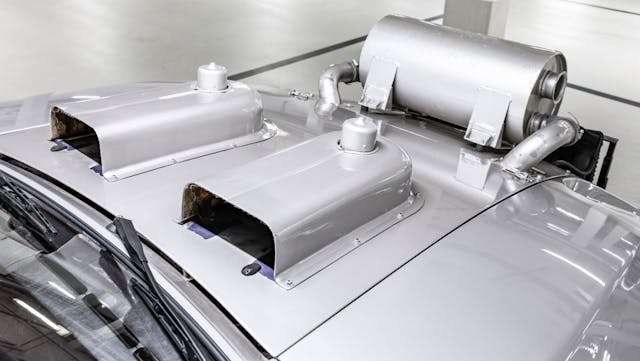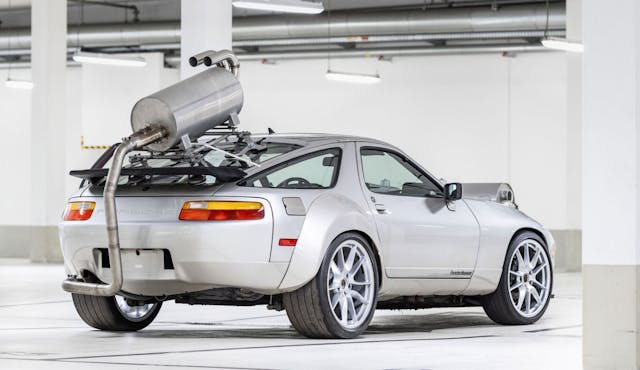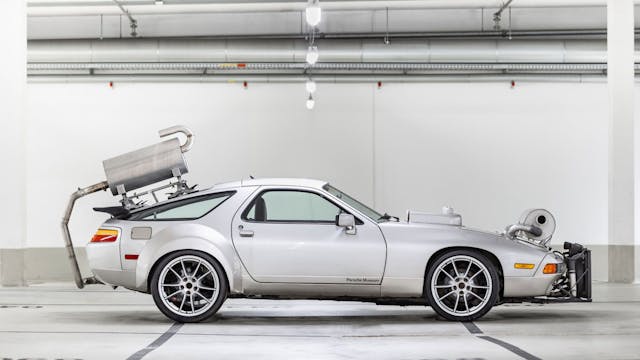This Mad Max 928 Refined Porsches for 30 Years
A one-off Porsche 928 testbed that served for more than three decades has deservedly won a place in the Porsche Museum.
The car’s main purpose during its long life was to help Porsche pass noise tests and the manual coupe was picked because because of the low-end power from its 5.4-liter V-8.
“Whether the engine was in the front or the rear, or how much interior space was available was irrelevant,” explains engineer Harald Mann. “Primarily, the testing required a lot of power in the lower engine speed range. Using the 924 was therefore a non-starter, and a 944 with its typical gearbox rattle at low loads was also out of the question. And an air-cooled 911 was too loud. It was important to minimize the noise of the vehicle as much as possible.”

Drive-by noise was a particular focus so being able to isolate each noise source in the car for testing was crucial. “The mechanical noise of the engine and the tires is, in fact, hard to influence,” says Mann. “In the end, it is always a mixed calculation: if the engine and gearbox are particularly quiet, the exhaust can be a little louder, for example. If the tires are excessively loud, then the intake noise might need to be quieter.”
The acoustic engineers literally wrapped the car in cotton wool to dampen major noise sources, mounted the radiator in front of the bumper, removed the fan, and fitted an enormous intake silencer. An over-sized exhaust silencer was strapped to the back window, the transaxle transmission was enclosed and the underbody insulated as well, giving it the look of one of George Miller’s Mad Max machines.



Initially the car was tested, not on Fury Road, but a section of the skidpan at Weissach before a dedicated section of track was created to measure the sound levels as the 928 whooshed by. At its most hushed the car was clocked at just 63 dB(A) at a time when the legal limit was 74 dB(A), making it the quietest 928 ever made.
Pirelli would also borrow the car to test new compounds and tread patterns so the 928 was fitted with wider arches to accommodate all manner of wheels and tires. It’s currently fitted with the same low-profile rubber as the 991-generation 911, showing just how recently the 928 was still working.
“It could still do the job today,” adds Mann.
***
Check out the Hagerty Media homepage so you don’t miss a single story, or better yet, bookmark it. To get our best stories delivered right to your inbox, subscribe to our newsletters.



It is great how they have been able to save much of their heritage. Even the odd ball stuff like this.
Reminds me of the BMW E36 M3 lightweight that Michelin used for about 20 years as their new tire test bed due to its incredibly analog driving experience and perfect balance of power, weight and track operating cost.
If a 928 was as cheap to maintain as an old Toyota I’d have one in a heartbeat. Simply awesome cars in and out.
That thing is such a wonderful oddball to have survived as a test machine as long as it has. If you saw it go by you might think it was an extra from Back To The Future.
No one ever mentions how driver friendly the car was, with doors sloping forwards so the opening edge didn’t nearly cut you throat when you got in and out. Try that in a Ferrari.